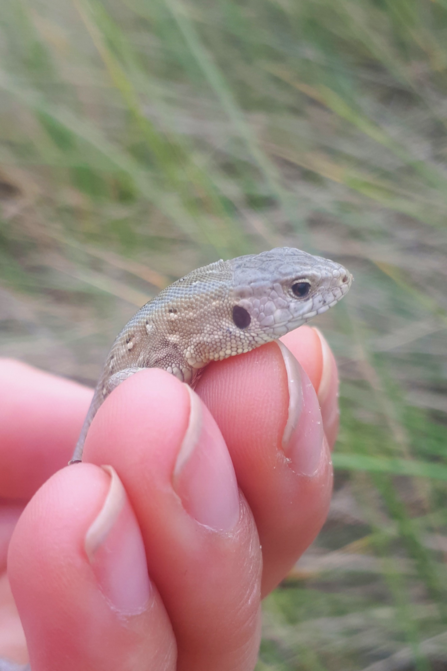Over the last three years conservationists have been giving the UK's rarest lizard a helping hand. Captive bred sand lizards have been released on to the Fylde Sand Dunes as part of a long-term conservation project to restore the species’ status and historic range within the UK.
Amphibian & Reptile Conservation (ARC), Fylde and Blackpool Councils, Fylde and North Merseyside Amphibian Groups (ARGs), Lancashire Wildlife Trust and Natural England have teamed up to safeguard the future of these magnificent lizards.
Lancashire Wildlife Trust, Fylde and Blackpool Council and the Environment Agency have been working in Partnership since 2013 on the Starr Hill Sand Dunes Environmental Works. This project received approval from the Environment Agency for a grant in aid funding to undertake dune management work in line with the sand dunes management plan and as described in the Fylde Coast protection strategy for the policy of hold line. The plan includes dune accretion, habitat improvement and monitoring.
The additional benefits of this project (in addition to coast protection) are that habitat is protected and created and this has led to the sand lizards being able to be reintroduced.
In the UK, sand lizards only live on two rare habitats; sand-dune and lowland dry heath. Due to vast historic losses, and fragmentation of these habitats via development and land use change, the species has been lost from north and west Wales, Cheshire, Kent, Sussex, Berkshire, Hampshire, Devon and Cornwall. Native populations now only remain in Merseyside, Surrey, and Dorset - though even here, losses of 97%, 95% and 90% have occurred respectively.
Due to these losses, the sand lizard is part of the Amphibian and Reptiles Conservation’s Biodiversity Action Plan. This has three main aims - protect the sites as nature reserves where the species occurs, to manage these sites to maintain and restore suitable conditions for sand lizards and to re-introduce sand lizards to managed sites in their former historic range.





